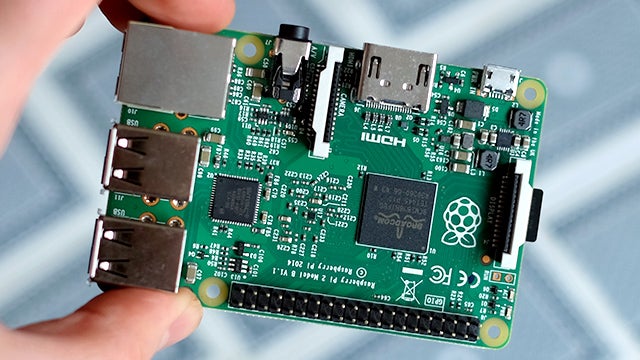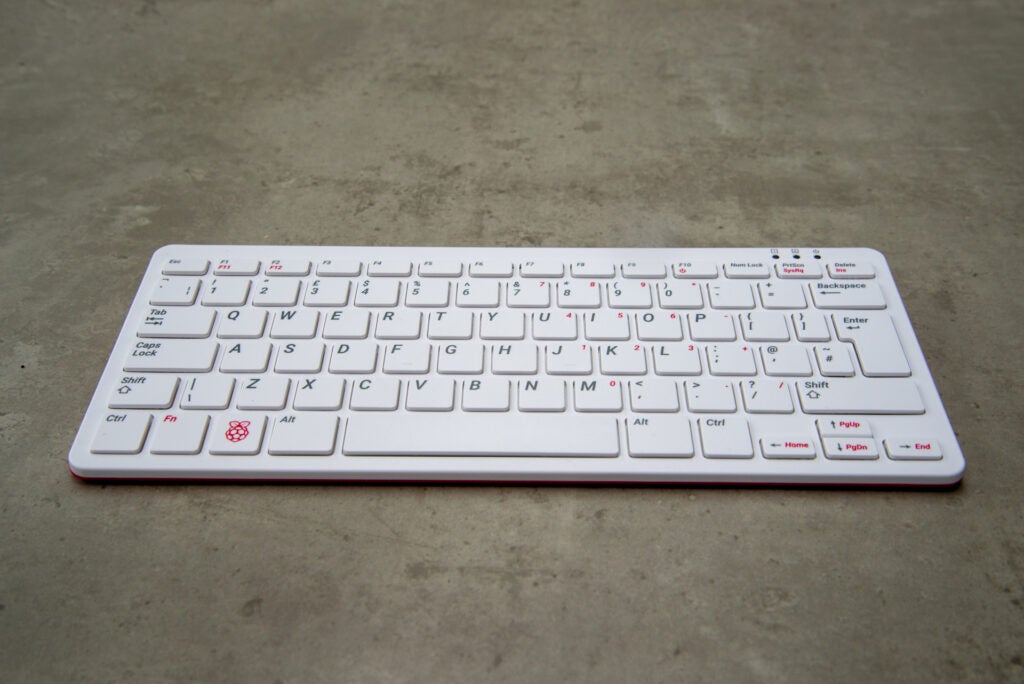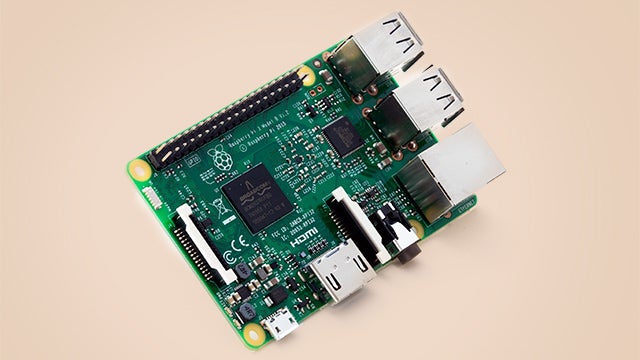
Verdict
Pros
- Huge CPU speed improvement
- Still cheap
- Decent wired connectivity
Cons
- Demands some patience
- No Android or Windows, yet
Key Specifications
- Review Price: £27.99
- 900MHz quad-core ARMv7 CPU
- 1GB RAM
- 4x USB 2.0
What is the Raspberry Pi 2?
The Raspberry Pi 2 is the latest generation of the most famous low-cost circuit board computer. While the Raspberry Pi Foundation has actually made a few different variants to date, this one has been given a much bolder title because its upgrades are much more substantial.
There are no peripheral features added, no wads of integrated storage, nor any wireless capabilities. However, its power has increased, going from a single-core 700MHz CPU to a quad-core 900MHz one, and RAM has been upgraded to 1GB.
It seems that, given the Raspberry Pi Foundation’s aims, the timing of the Raspberry Pi 2 is probably linked to these components, allowing the second-generation model to sell for $35/£27, the same price as the older ‘model B’.
It’s largely a case of more power, same price.
SEE ALSO: Raspberry Pi 2 vs Raspberry Pi – What’s changed?
What can I do with Raspberry Pi 2?
If you’re not upgrading from the first-generation model, you might ask what you can do with a Raspberry Pi 2. We advise for now thinking of the circuit board computer as either an educational/coding tool or one to play around with the various Linux-based projects people have been working on for the past two years. There are loads around.
One of the key things to recognise about the Raspberry Pi 2 is that it’s mostly backwards compatible with the original’s software, even though their system architecture is somewhat different. A dev-side compatibility tweak is required for any bits of software designed as bootable – acting as their own front end – but most non-dormant projects are likely to get updated quickly.
SEE ALSO: Creator CI20 vs Raspberry Pi
However, some of the other big talking points of the circuit board computer deserve to be viewed with some skepticism. The biggies are it running Android and that it will get free Windows 10.
First of all, there is no fully working build of Android for Raspberry Pi available at the time of writing. A few years ago a sort-of working Android 2.3 build was released, but since then development appears to have stalled. Raspberry Pi 2’s extra power may well see work on the Android project taken up once more, but there’s no guarantee.
Just as contentious is the suggestion that Raspberry Pi 2 gets Windows 10 for free. This is true, but in a limited sense. First, it is not available yet. The Windows developer previews currently available will not work on Raspberry Pi 2.
SEE ALSO: Best SSDs Round-up
The version it will eventually get is part of Microsoft’s Internet of Things initiative, a special embedded version of Windows 10 designed to work on very low-power devices. It’s not intended to be a consumer-facing piece of software either, but something for developers to fiddle with in order to work out what the Internet of Things future is really going to look like.
In other words: manage your expectations. It’s not going to replace your desktop just yet.
However, if you’re looking to get into coding or want to make a little low-cost media box for your TV, stick around.
Raspberry Pi 2 – Hardware
The Raspberry Pi 2 looks an awful lot like the B-plus variant of the first-generation Pi, to the extent that cases for that model will also fit the Pi 2. That’s handy, although with cases available online for a couple of pounds on eBay, it’s not a big win.
It connections are the same too. There are four USB 2.0 ports, a 3.5mm audio output, HDMI port, Ethernet port and microSD card slot. The memory card is used to hold whatever OS you choose to install on the Raspberry Pi 2, as there’s no integrated storage. Note that it uses the micro size of card, not the full-side SD type used in other Raspberry Pi variants.
For those wanting to get more involved, there are CSI camera and DSI display connectors, as well as a bunch of GPIO pins that’ll come in handy for some of the coders among you. If that all sounds like nonsense, don’t worry: for the basics you can ignore the lot. They basically let you attach other components directly to the board, rather than using USB.
The Raspberry Pi 2 and its earlier relatives do not come with any form of power source either. However, it uses a 5V Micro USB cable, the same used by just about all Android phones.
Next we’ll look at exactly how powerful the Raspberry Pi is.


